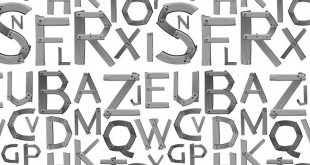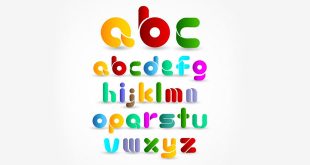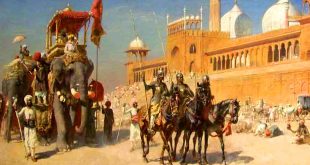Question: What do you understand by the term gender? Answer: The way each society perceives what a ‘man’ is and what a ‘woman’ is, and what their different roles and responsibilities are, is called gender. It is more than the biological difference between men and women. Question: What is a stereotyping? Give …
Read More »NCERT 6th Class (CBSE) Science: Changes Around Us
Question: Breaking of tumbler and burning of paper are change in which we cannot get back the original substances what is the difference between these two changes? Answer: Breaking of glass tumbler is physical change as no new substance has formed and the broken tumbler remains glass only. Burning of …
Read More »बड़ा दिन क्रिसमस पर विद्यार्थियों के लिए हिंदी निबंध
जिस प्रकार दशहरा और दीपावली का संबंध हमारे भागवान श्रीराम से तथा जन्माष्टमी का संबंध भागवान श्रीकृष्ण से है, उसी प्रकार क्रिसमस का संबंध ईसा मसीह से है। क्रिसमस का यह पर्व प्रतिवर्ष 25 दिसम्बर को विश्वभर में बड़ी धूमधाम से मनाया जाता है। इसी दिन लोकोद्धारक, परम, दयालु, गरीबों …
Read More »Asyndeton Examples: Asyndeton for Students and Children
This is not just another figure of speech. The power, force, intensity and vehemence this device infuses into any writer’s, or speaker’s, work can be commendable. The rapid effect while keeping the audience hooked on to the edge is what an asyndeton statement does. Evolved from the Greek word asyndetos; …
Read More »Assonance Examples: Assonance for Students and Children
Reading the line “it beats….as it sweeps…… as it cleans” can interest you and catch your attention. Here, the writer has repeated the sound long ‘e’ to create a rhythm and to increase the mood the line creates. This advertising slogan of 1950’s is a strong instance of Assonance. Do …
Read More »Appositive Examples: Appositive for Students and Children
What happens when you miss out a part of your sentence either while reading or writing? It becomes meaningless and incomplete. This phenomenon, often considered sacrosanct, doesn’t really apply to a sentence with an appositive. Appositive is an excellent tool that can be defined as a noun or phrase of …
Read More »NCERT 6th Class (CBSE) Science: Sorting Materials into Groups – Quiz
NCERT 6th Class (CBSE) Science: Sorting Materials into Groups – Quiz 18 Multiple Choice Questions related to NCERT 6th Class (CBSE) Science: Sorting Materials into Groups – Quiz: Materials have different properties like roughness, luster, transparency solubility, flotation, attraction towards a magnet, conduction of heat and conduction of electricity. Materials …
Read More »NCERT 6th Class (CBSE) Science: Sorting Materials into Groups
Question: Name the different properties that materials have? Answer: Materials have different properties like roughness, luster, transparency solubility, flotation, attraction towards a magnet, conduction of heat and conduction of electricity. Question: What are miscible and immiscible liquids? Give three examples each. Answer: Liquids that dissolve in water are said to be miscible …
Read More »NCERT 7th Class (CBSE) Social Science: Political Changes in 18th Century – Quiz
NCERT 7th Class (CBSE) Social Science: Political Changes in 18th Century – Quiz 13 Multiple Choice Questions related to NCERT 7th Class (CBSE) Social Science: Political Changes in 18th Century – Quiz: The Mughal Empire declined during the reign of the Later Mughals. Many independent Kingdoms came up. Regional kingdoms …
Read More »यदि मैं डॉक्टर होता: विद्यार्थियों के लिए हिंदी निबंध
कुछ वर्ष पहले की बात है एक भयानक संक्रामक रोग ने मुझे आ दबोचा और मुझे पास के सरकारी अस्पताल में दाखिल करा दिया गया। मुझे वहाँ लगभग पन्द्रह दिन रहना पड़ा। पहला सप्ताह मेरे और मेरे घरवालों के लिए बड़ी चिन्ता, क्लेश और कष्ट का रहा। कभी लगता मैं …
Read More » Class Notes NCERT Solutions for CBSE Students
Class Notes NCERT Solutions for CBSE Students







